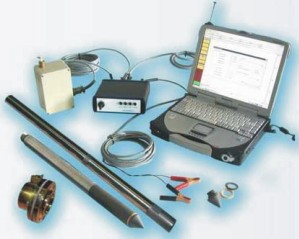
- PL
- EN






CPT and CPTu static soundings are commonly used throughout the world and are applied to identify the subsoil under the construction objects. The test allows for direct exploitation of research results in designing of the direct or deep foundation.
The apparatus is used to determine the parameters of cohesive and non-cohesive soils, inter alia, the liquidity index, density index, shear strength without drainage and oedometer modulus of the soil.
The use of electric cone with sensor of the pore water pressure (CPTu test) creates an additional opportunities. This version of the measuring cone allows for the continuous measurement of the parameters in the studied geological profile.
Application of CPT / CPTU tests may not be possible when coarse and very coarse fraction (sand-gravel mix, gravel, rock waste, clayey weathering waste) are occurring in the subsoil. Execution of the test in such conditions may damage the measuring cone, therefore in such case the dynamic sounding (DPH or DPSH) is recommended to be used. CPT/CPTu tests should always be supplemented by research drillings, soil sampling and laboratory tests.

source: http://www.geosoft.com.pl/
The aim of research using static cone penetration CPT is to determine the resistance of soft rock during the insertion of the cone and friction on the sleeve. The test involves forcing of the conical penetrometer vertically into the ground using the column of rods. Penetrometer should be forced into the ground with a constant speed of insertion (2 cm/s). The apparatus registers the resistance of the cone insertion qc, as well as the friction on the sleeve fs. Sounding in the CPTu technology additionally enables the measurement of the pore water pressure.

source: own data
CPT/CPTu static tests are used for the precise recognition of the characteristics of the subsoil. They are executed to identify sequence and depth of occurrence of the geological layers,
to determine soil-water conditions and physical and mechanical properties of the individual layer. Based on the obtained results, the foundation of the structure can be designed optimally
i.e. optimum length of piles and their load-bearing capacity, dimensions of shallow foundations

source: own data